HOME
GALLERIES
Greater Angkor, Cambodia
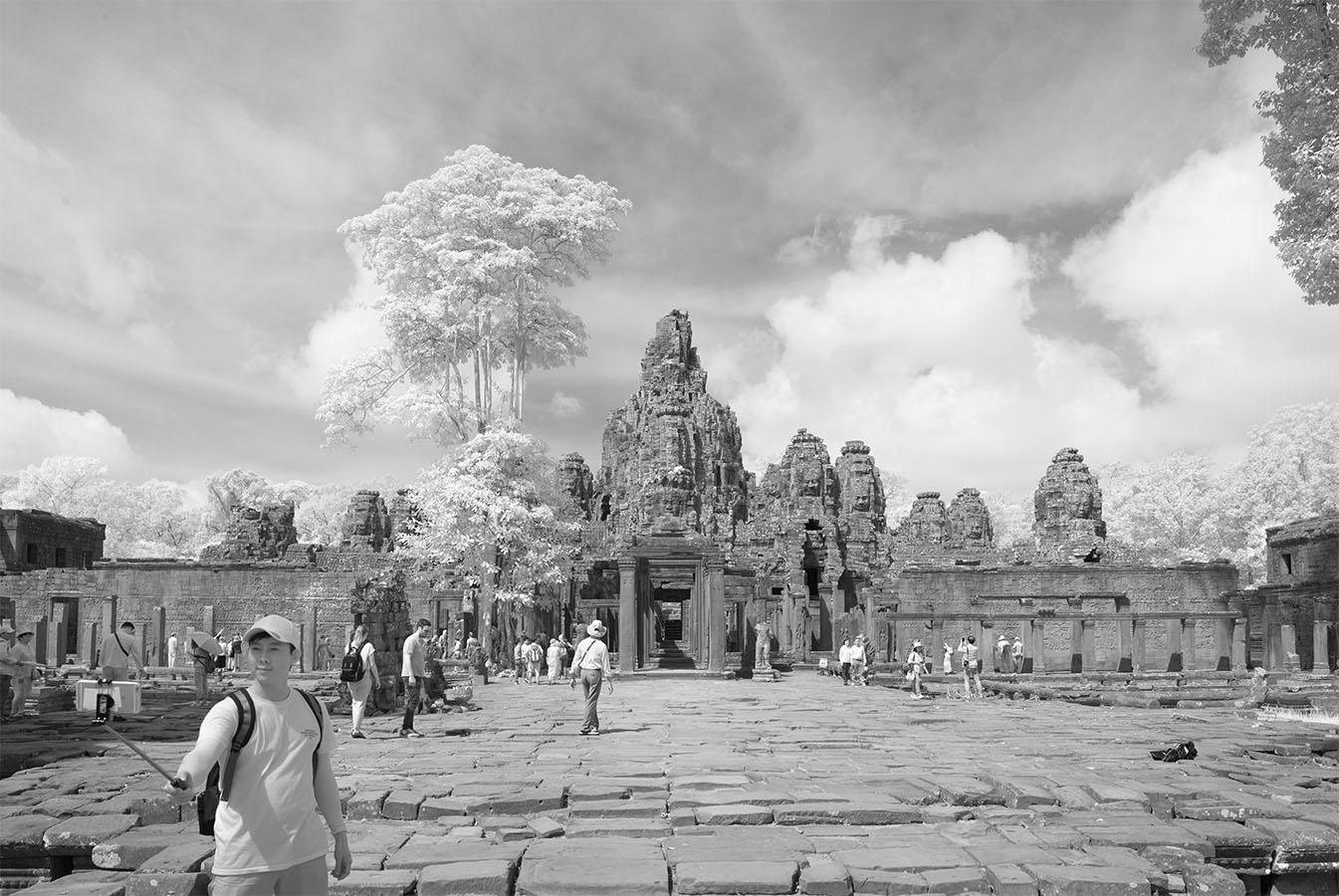
Selfie at the Bayon The State of Tourism at Angkor... Julee says she saw him later in the temple complex posing endlessly with his selfie stick. If we don t have a picture of ourselves in situ, were we really there? It's been discussed! I'm not sure I can claim very much in the way of moral superiority, given that I was carrying the value of a decent used car in cameras and lenses. I'm always trying for Art, even on these flying visits where I'm completely at the mercy of timing and weather. I sometimes succeed, even so. I'm not sure how to characterize this one. Does it quite make it to Art? If not, a good Postcard Shot? Maybe I should leave it there. I like the picture, and I'm not attached to the category.
This is the Bayon in Angkor Thom, a specific temple in a specific part of the Angkor complex. (“Angkor Wat”, though often used as a label for the whole complex, is also, actually, a specific temple within it. Angkor Wat is much bigger than the Bayon (!) and has the iconic profile found on the Cambodian flag.)
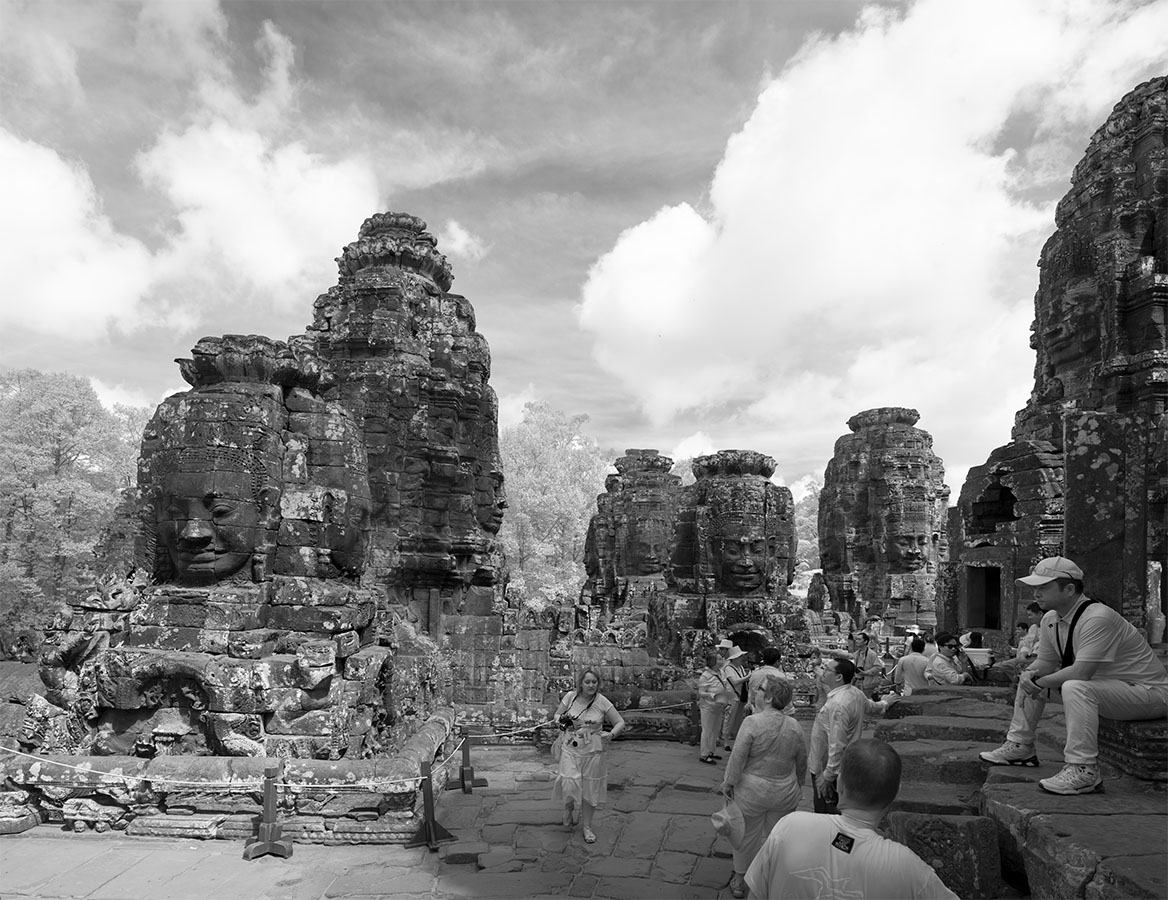
On the Bayon Terrace
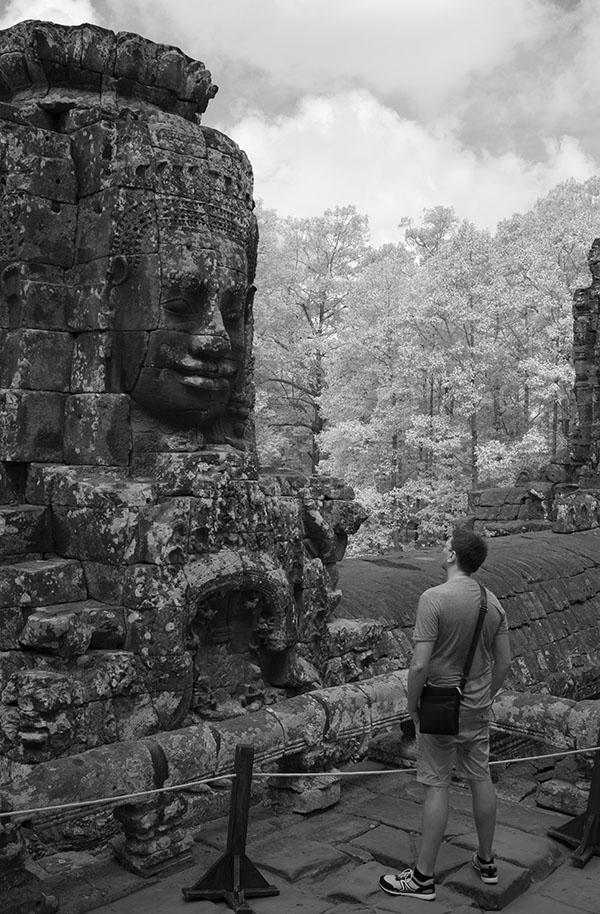
Contemplating Jayavarman This is on the high terrace of the Bayon Temple itself, on a level with the faces of Buddha, although I'm wondering how strong the identification can be given the dotted lines inherent in medieval history. The faces are also believed to be representations of the builder, Jayavarman VII, a theory I have to support given the close resemblance to this portrait in the Guimet Museum in Paris.

Photo by Susan Black via Wikipedia Commons.
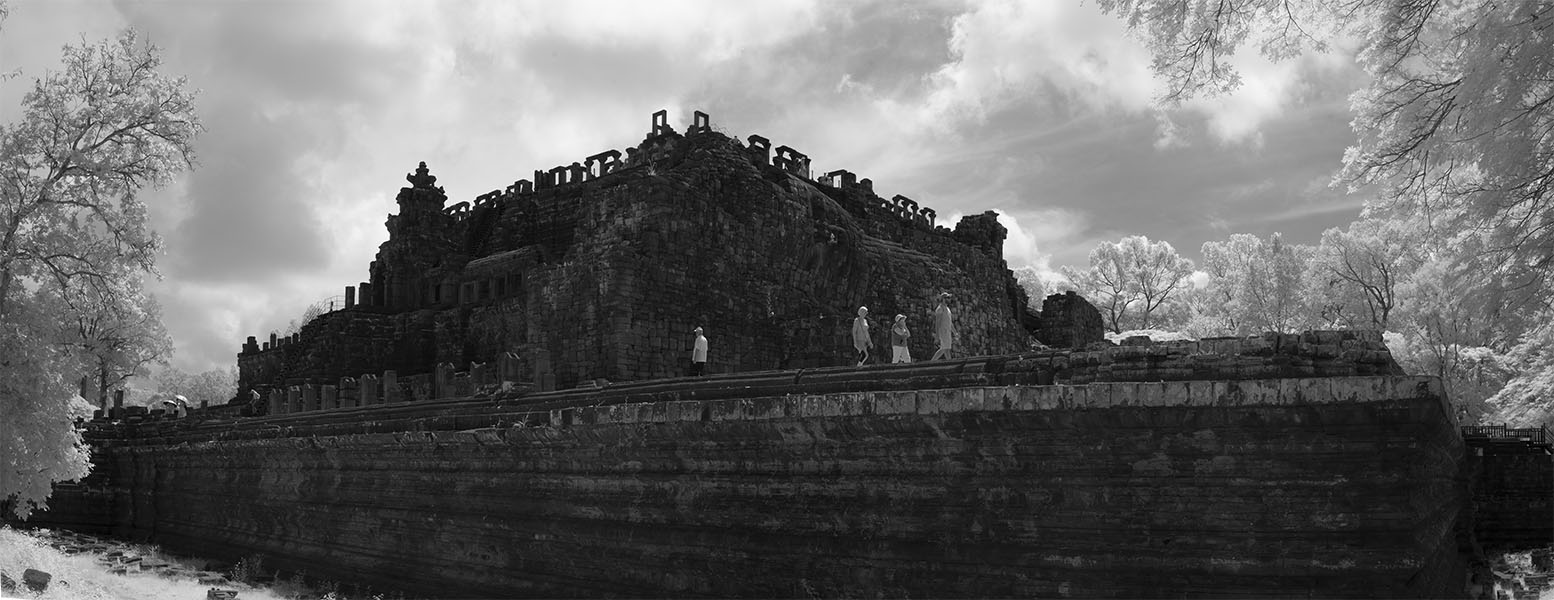
The Baphuon The big temple "next door" to the Bayon. It predates the Bayon, and Angkor Thom by a century and a half or so. Angkor Thom is a square moated enclosure, three kilometers to the side, oriented to the points of the compass, with the Bayon dead center with roads through the middle of the walls on all four sides leading straight to it. It's redolent of all kinds of devic and tantric symbolism, but also built in the context of earlier temples and structures like the Baphuan and Angkor Wat proper. Hey, Louis XIV had a fine palace in Paris, but still buildt a new one at Versailles and moved his government there. The story of the reconstruction of this building has some weird twists and turns, but it's declared complete. There does seem to be something missing. There was a tall tower, probably made of wood, and so completely lost.
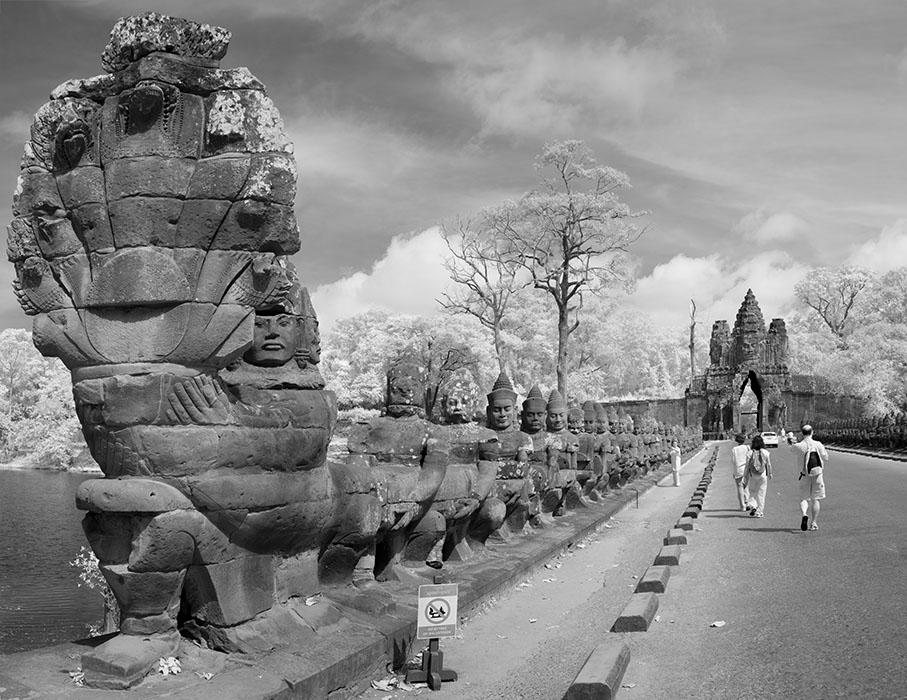
Naga Railing, South Bridge and Gate, Angkor Thom One of the four bridges over Angkor Thom's moat, also symbolic of the world's ocean... We came and left this way. The truth is that today this "lost city" is very much a park. Neat, orderly, well paved, well served.
GALLERIES





